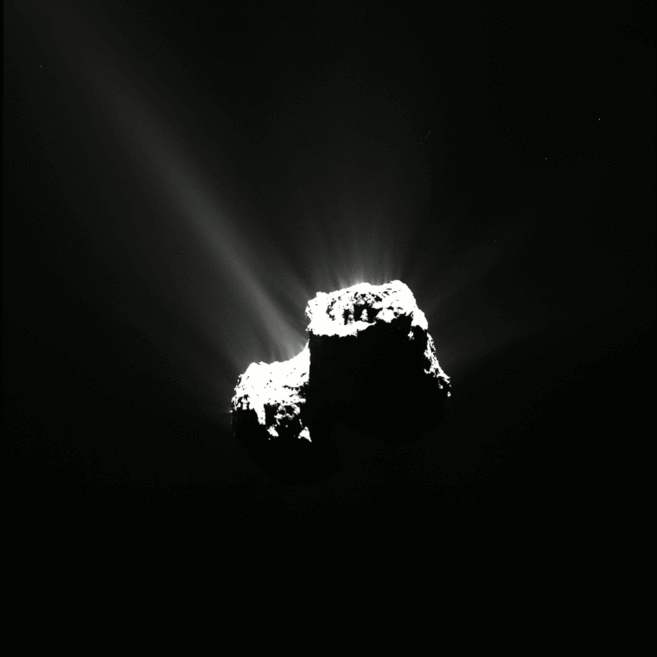 get up to date with Comet Churyumov-Gerasimenko as we approach our autumn speaker meeting and the presentation by Mark Baily of the Armagh Observatory. For example, see http://phys.org/print359359633.html … where the surface of the comet is discussed in a paper in Geophysical Research Letters this month (August, 2015). There are numerous fractures and cracks on the surface of the comet.
get up to date with Comet Churyumov-Gerasimenko as we approach our autumn speaker meeting and the presentation by Mark Baily of the Armagh Observatory. For example, see http://phys.org/print359359633.html … where the surface of the comet is discussed in a paper in Geophysical Research Letters this month (August, 2015). There are numerous fractures and cracks on the surface of the comet.
Over at www.thunderbolts.info/wp/2015/08/20/crystal-comets/ … electric universe fans might take a look at this one. It begins by talking about Churyumov-Gerasimneko and dust and debris whipped from the surface but then resorts to dust brought back from Comet Wild2 (the Stardust mission), saying that minerals normall found in rocks formed at extremely high temperatures were included in the sample grab bag. The crystaline structure of some of them can be explained by EU theory. It may also go some way to explaining the anomalous heat found on Pluto.
At https://cosmosmagazine.com/space/what-rosetta-found-comet-67p … which is shorthand for Churyumov-Gerasimenko. The image above was taken from Cosmos and goes on to review a couple of articles on the comet this past year, both in the journal Science. We also have the statement, the music of the spheres which was associated by the ancients with planets may actually come from comets. The article author says comets were viewed as mountain sized icebergs in space and when crash landing on Earth supplied our environment with lots of additional water – but this is wrong as comet water is heavier than water found on Earth. It was also found the comet didn't have a magnetic field.
The surface of the comet is covered in sinkholes and perhaps these are the source of the material forming the two tails – one of which is composed of gases (the coma) and the other, dust and debris swept from the surface. Vibrations picked up from the comet caused by gases being stripped from the surface by the solar wind appear to create a song – a version of the music of the spheres.
At perihelion the activity on the comet increased with dramatic plumes of ice and dust launched into space. Whereas a ton of dust went that way only two bath tubs of water vapour were launced into space.
